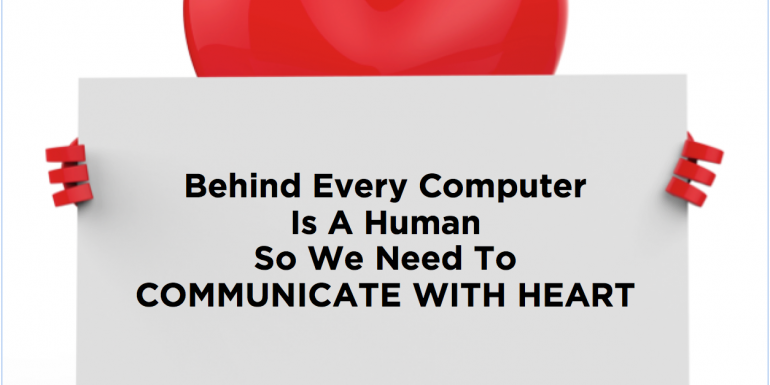The English language we use today, both orally and in writing, is very different to the language used several decades ago. However, I often find that people are still writing in a very formal, distant, cold and passive style that just doesn’t match our high-tech, progressive business world. Many people tell me they use this more formal style to be ‘professional’. They say, “This is what I write, but it’s not how I speak”, or “This is what I say, but I have to write in a different style.”
And there lies the paradox. Decades ago, our ancestors’ speaking style matched their writing style. Just as it should. Over the decades, our speaking style has evolved. But what has happened to our writing?
Leave The Past In The Past
Every language evolves to reflect the current times and changing needs. In the early half of the 19th century, business communication was very formal, relationships were formed slowly, resulting in passive voice and over-politeness being the norm. In writing, people embellished their messages with flowery, bombastic words. Lengthy messages were filled with redundancies and verbosity. This was perfectly fine in those days. It was entirely normal for the times we were living in. In those days, the oral communication style matched the written communication style.
Today, the language of business communication has changed. We are speaking to our colleagues, clients and stakeholders in a very warm, friendly, natural, relaxed, personal style. And it’s still professional, or at least it should be. It’s essential that our written messages should reflect this.
So how can you leave the past where it belongs and make the transition into today’s global business English?
Communicate With Heart
When you’re talking with a colleague, I’m sure you don’t beat around the bush or use long-winded sentences, and I’m pretty sure you don’t use bombastic words and outdated language, like “Please find attached the above-mentioned leaflets for your reference and perusal.” So don’t do it in your writing either. Get to the point quickly but courteously, use everyday words, short sentences, and keep your writing style warm, natural, friendly and relaxed.
When communicating with a potential client, a business partner or a customer, make your interaction relational, not transactional. Remember you are speaking (or writing) to a real person, and everyone has a heart. Let your interactions speak to the person, the human being with feelings. Do this when you speak, and then when you write, do exactly the same – write in a similar style to how you would speak if you were having a conversation.
This is the essence of communicating with heart.
Focus On Expressing Not Impressing
Decades ago, our ancestors aimed to impress with their writing. Today, the key is to express. This means using plain English, which is writing in a simple, clear way that considers your reader and gets the right results. It’s faster to write, faster to read, easier to understand, it’s straight to the point, and it’s also courteous. It’s also much more friendly.
Among the many benefits of adopting this style of writing will be developing great relationships, which will develop increased trust and confidence. This will more likely result in better client relationships, happier customers, increased sales, and successful partnerships.
Consider Your Reader
No matter what our country or culture is, one of the key considerations when communicating anything will always be the audience. In the case of writing, this is your reader. I feel sure that whenever you write any message, you are probably hoping for a positive response and great results. If you are to achieve this, I suggest you should:
- Think like your reader thinks.
- Feel like your reader feels.
- Use words your reader can relate to.
- Write in a clear way that your reader will understand.
Where To Start Making Changes?
Some simple but very specific changes can save you time and have a tremendous impact on the results you achieve from all your written communications. Here are some key points to remember:
- Make your written communication style very similar to your spoken language.
- Keep all your written messages warm, friendly, natural, sincere and relaxed.
- Communicate with heart and aim to build great relationships with your messages.
- Express yourself in a simple and clear way, with a focus on your reader.
- Use a conversational style when you write, just like you are speaking.
- Write effectively and you will build trust and earn respect with every message you send.
Shirley is giving away a FREE Checklist ‘Top 10 Reasons Why Your Writing Style May Not Be Working and What You Can Do About It’. PLUS you will also receive a free trial comprising four modules from her unique, interactive, virtual training program ‘Business Writing That Works’. Write to her now at [email protected], and put ‘APSS Checklist and Trial’ in the subject line.



